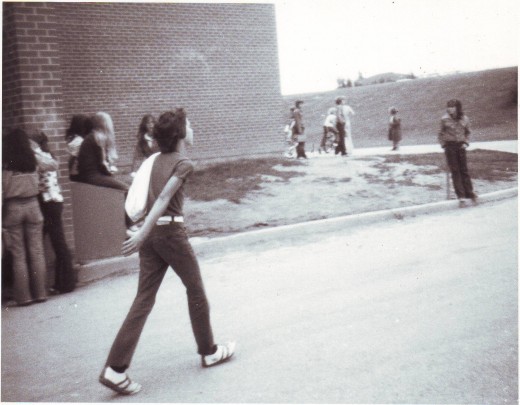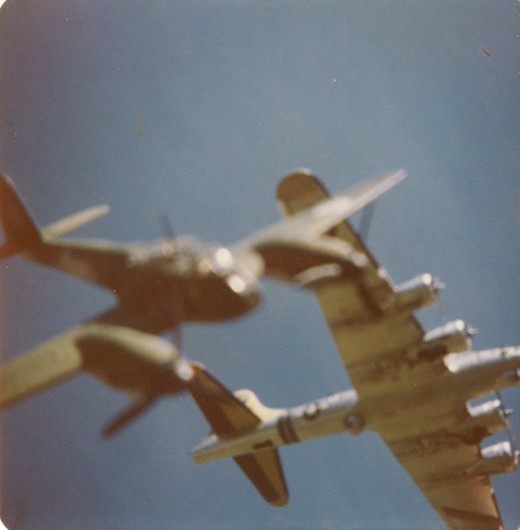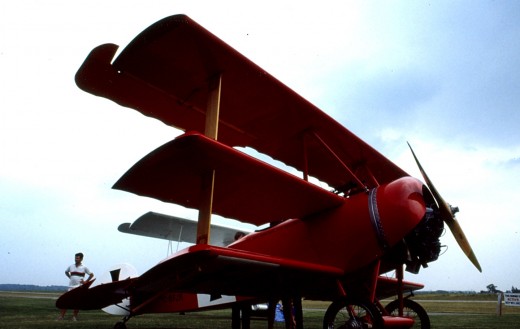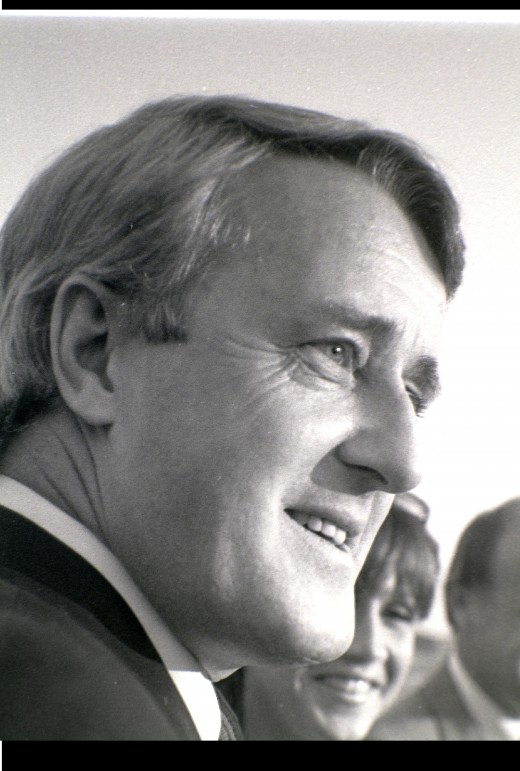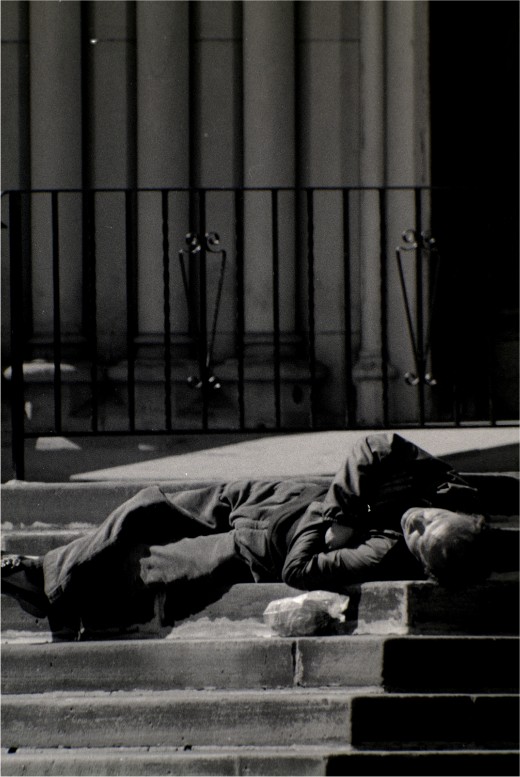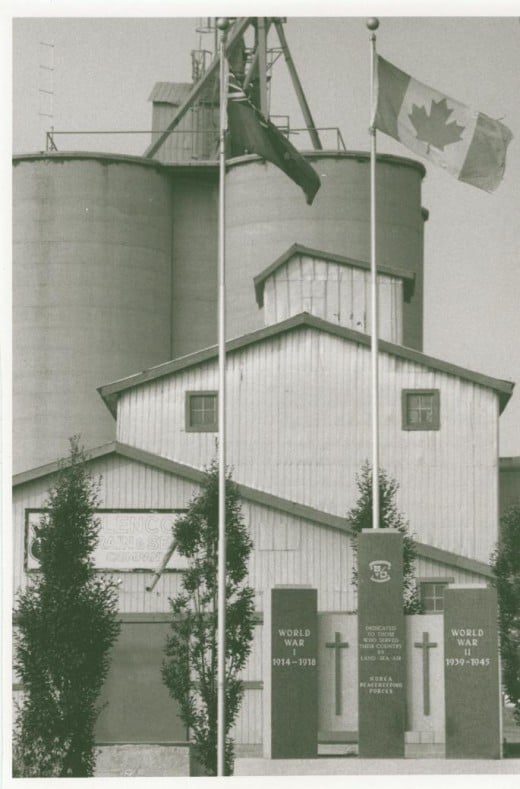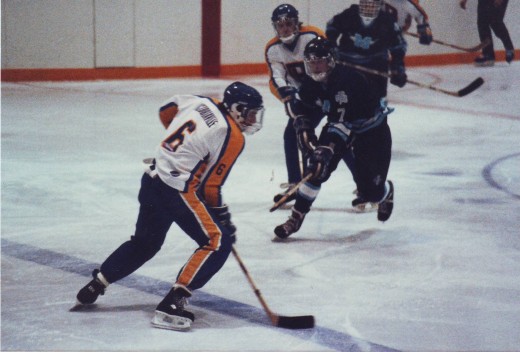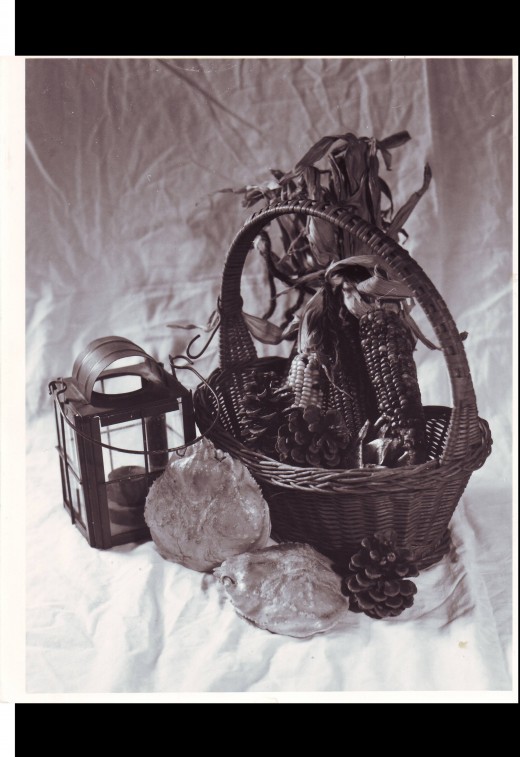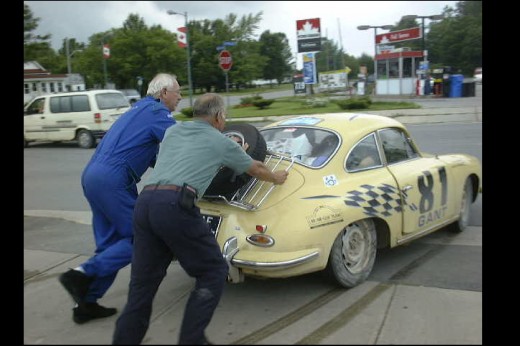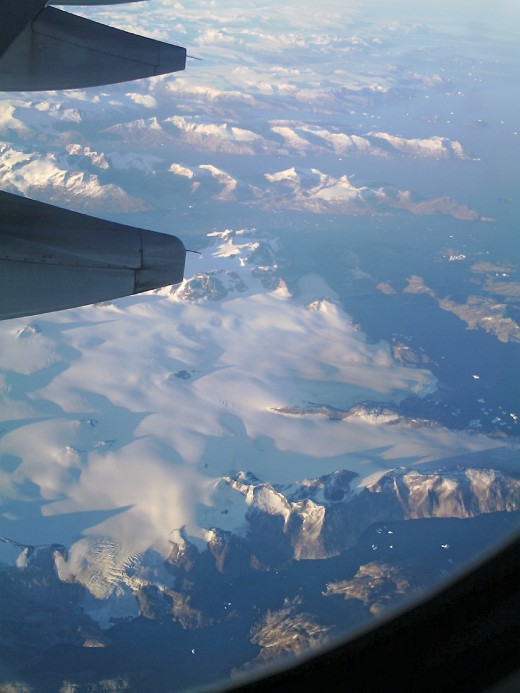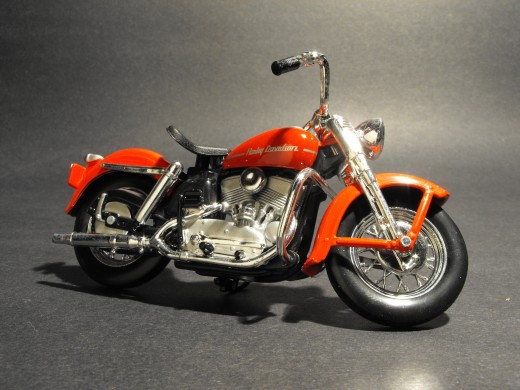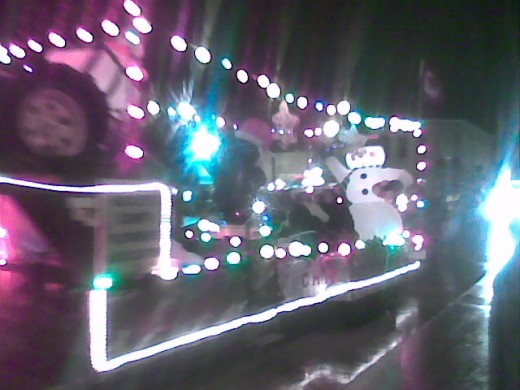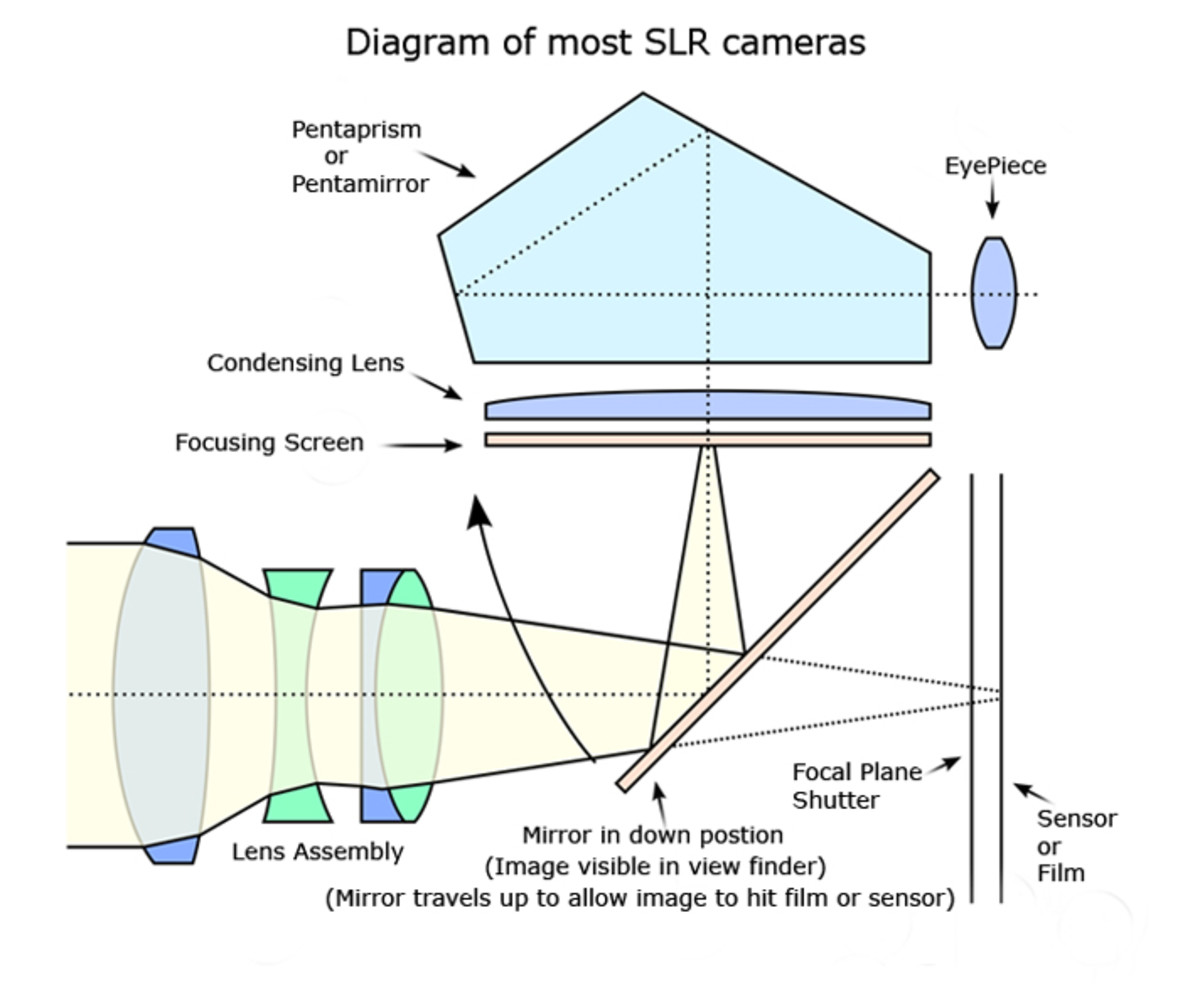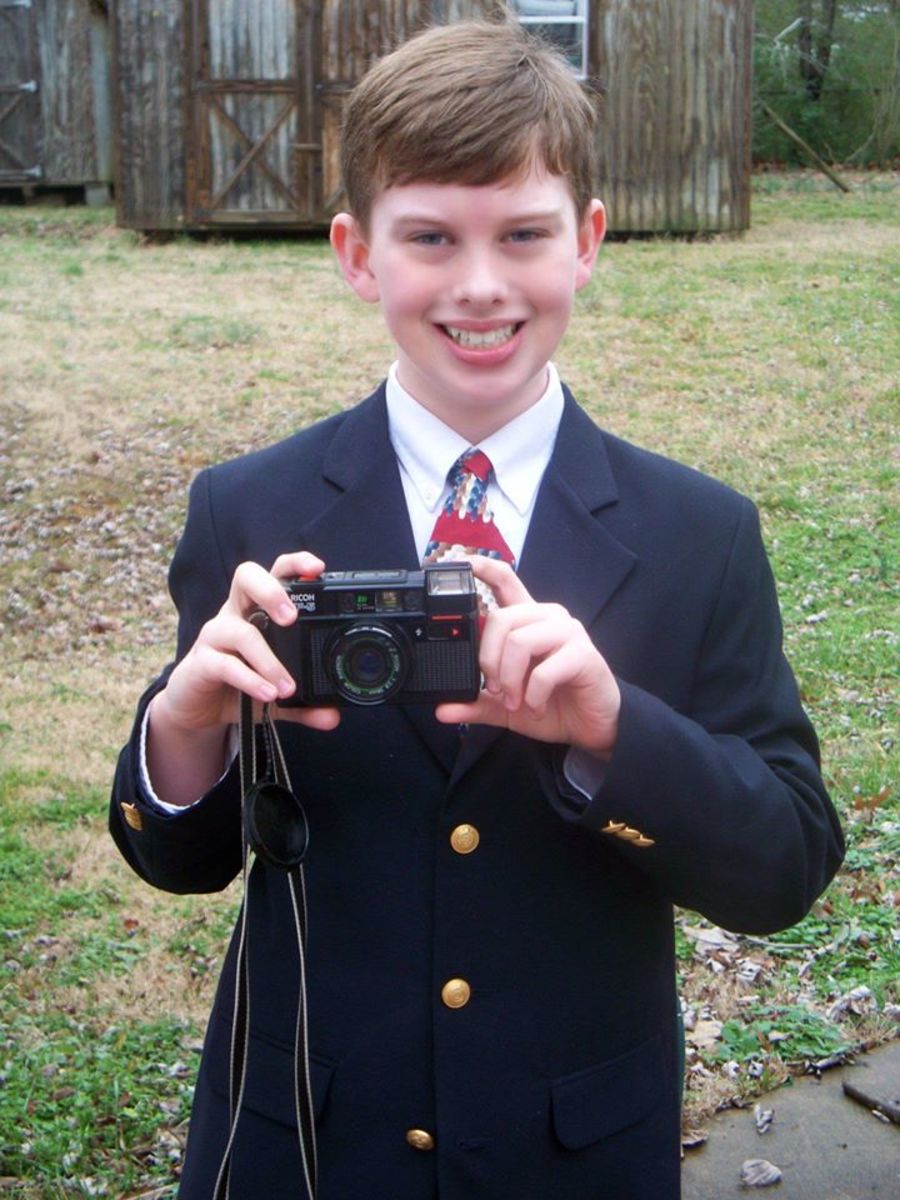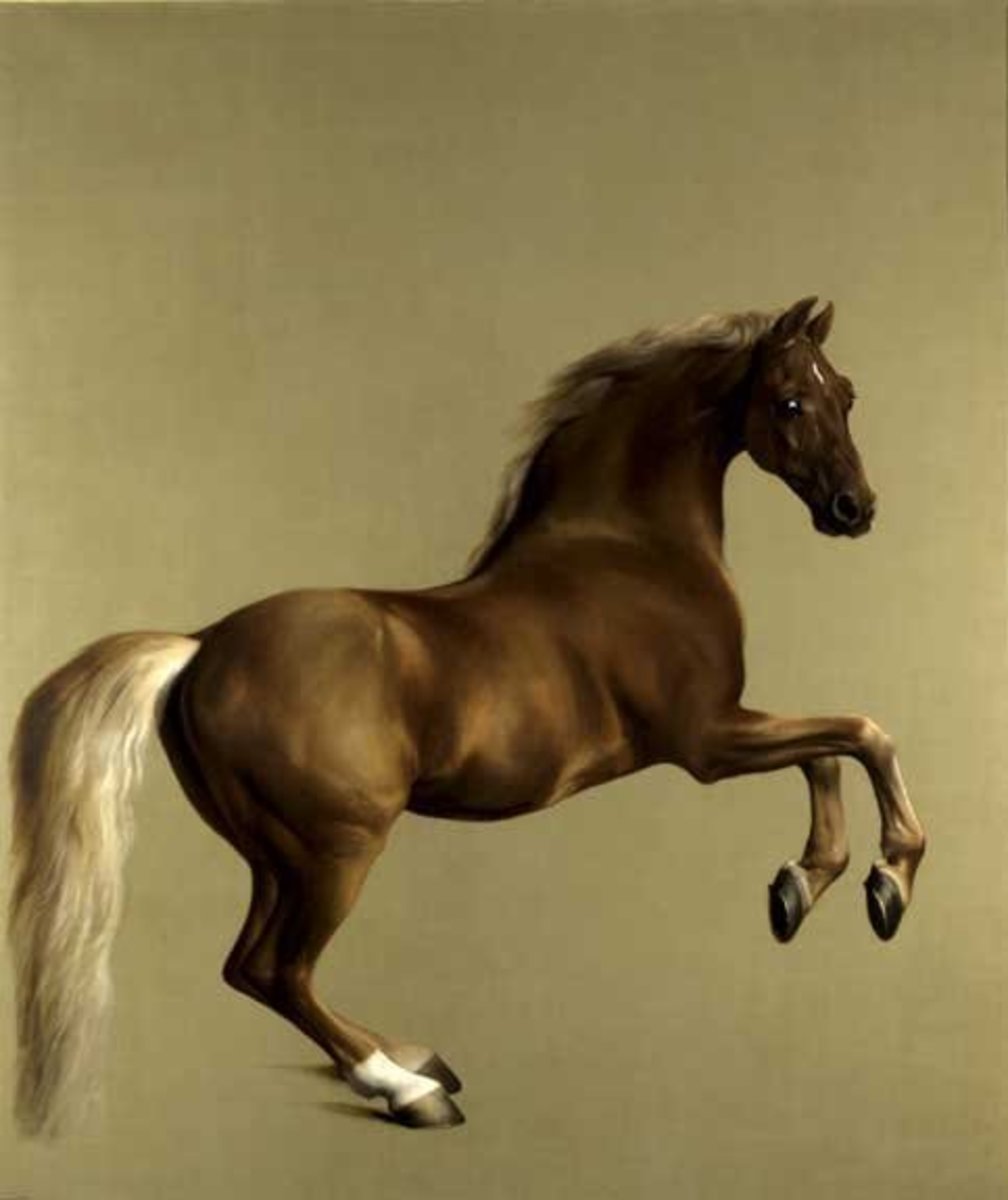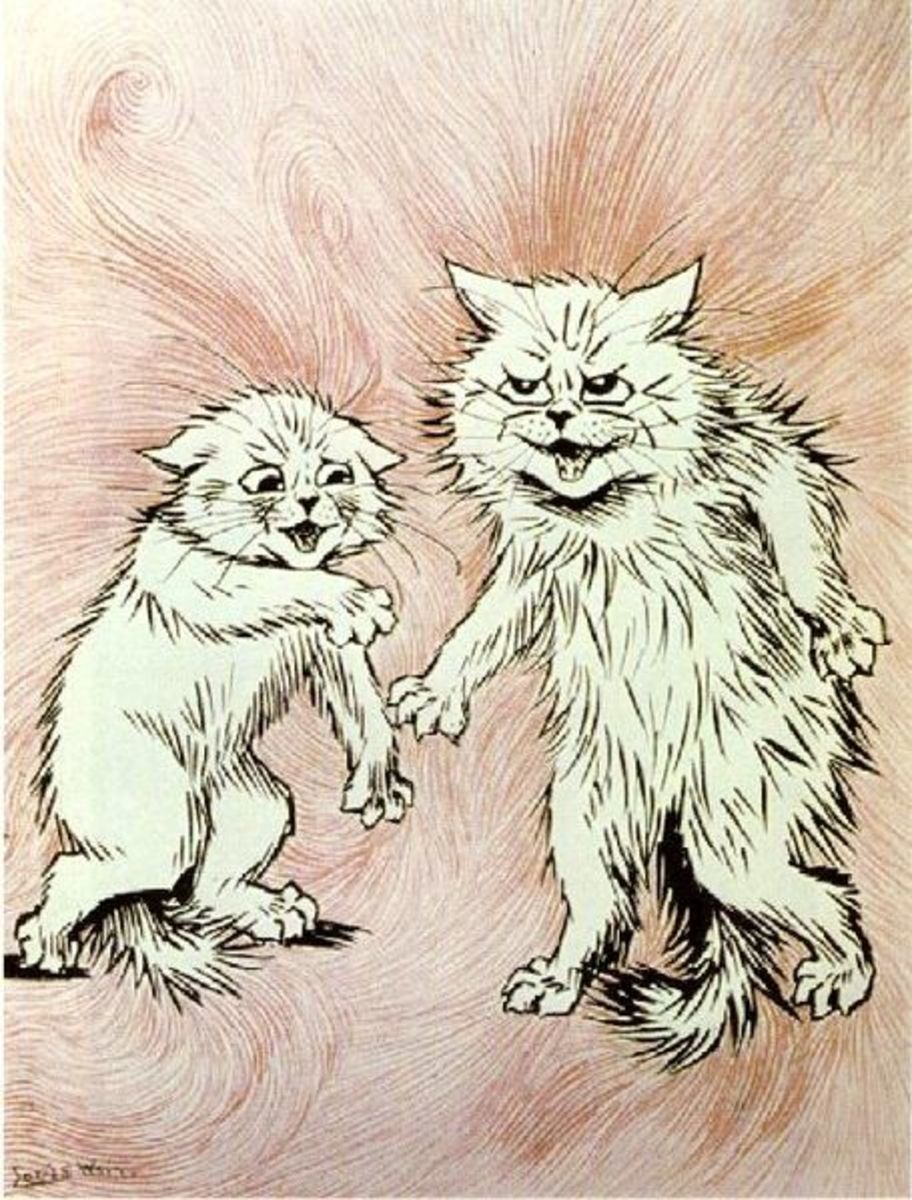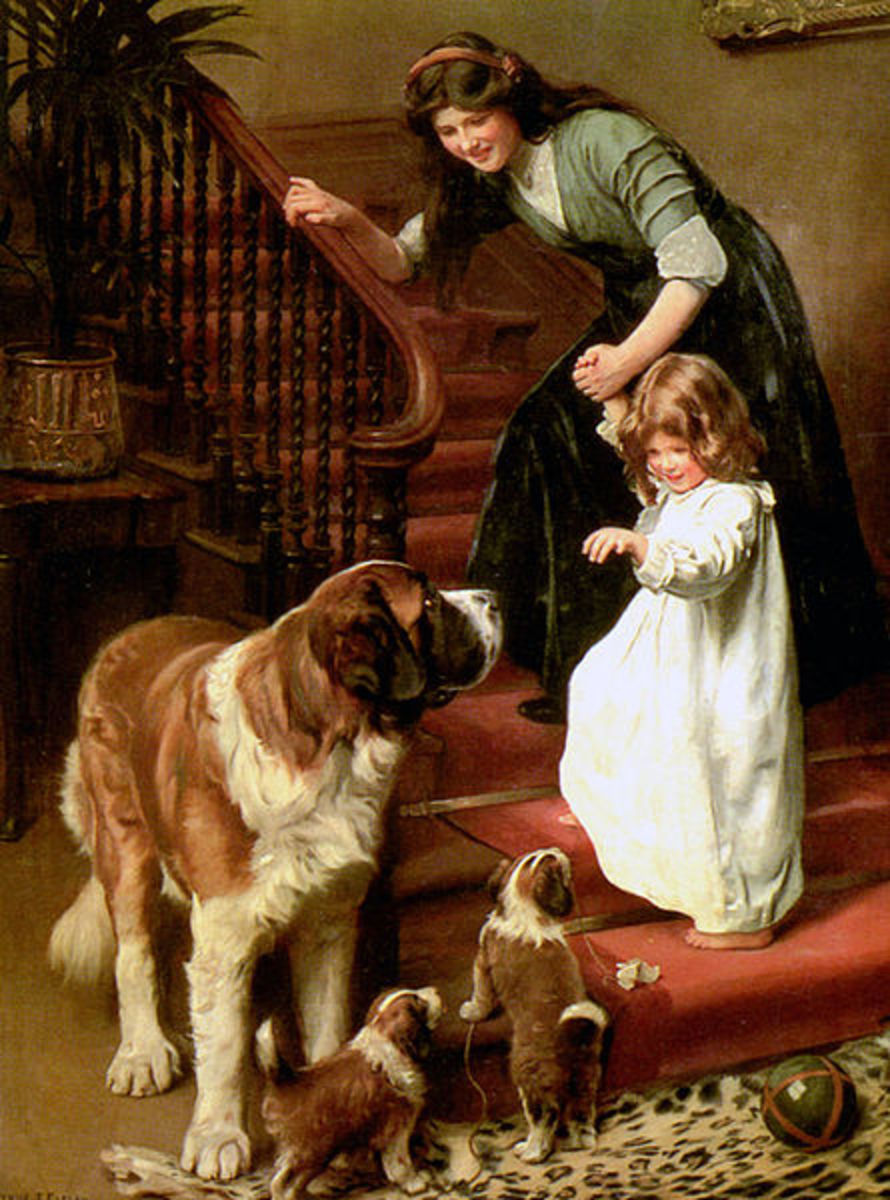Photography Throughout the Ages
The Timelessness of Picture Taking
By Steve Robson
Today, many people take for granted, the simplity of digital photography. With just one push of the button, a picture is taken and you know works. With the numbers of pictures of that now can be taken, one does not know that is it was not aways like this. I will be looking cameras I own and take a look at how early cameras and the people that used them had to do just to create an image. I have cameras going back to the early part of the century. Some of these no long have film that can be used so I can not show a picture from the camera. There are other cameras I have taken pictures with older cameras at a time when the film was round to use. The article deals with the various steps needed to create an image with each camera shown. As it will reveal, that there have been many improvements over time to get pictures in a easy fashion but the simple art of getting a quality image may have been lost over time.
While the simple camera design filled most of the family taking needs, there are other photographers that what much more control over there images. I found this out myself when I was just a young boy in my early teens. I was using a basic Kodak X-15/ 126 film based camera to do some close-up pictures. I learned right then about the limits these simple cameras had. When I was going to high school, I looked up and found out about the world of the 35 mm SLR camera. This beast had eveything I was looking for in a camera to take the pictures I wanted. The only thing holding me back was the price. Considering the time I was looking at these in 1975 time frame, 200.00 dollars was a lot of money. I really did not do too much picture taking at this time. It cost a lot to get pictures developed. I was not getting the types of pictures I wanted as well. It was a waste of money keep getting blurry pictures of models in close-up with a fixed focus camera.
While many people have used and still use simple point and shot cameras, their are others that use the camera either to express themselves or make money at taking photos of events and family portraits. For this type of work, a great amount of control is needed to create an image. Work can range from fast, action based shoots to controled studio conditions. The camera that has this amount of control has been around for a long time. These date back to the late 19th century. When compared to a point and shot camera, these advanced cameras have always been more expensive.
I started to collect older cameras and try to get a wide range of cameras that represent the history of image making machine. I wanted to see how this machine has evoloved over time and how the details the camera have changed the way we see.
By the early part of the 20th century, the sensity of the film had come to the point where action stopping pictures could be taken. The larger format camera was the ruling machine for a working photographer. While there where many camera type in this class, I picked an example a large format SLR camera. It called the ICA Dresden. It dates back to the early 1920s. Although it is old, it has a number of features still used on today's cameras. The shutter type used is a focal plane shutter. Although the newer designs are far more refined in the way they are designed, they still work the same as this old workhorse. The shutter speed goes up to a fast 1/1000 of a second. The SLR style of viewing means you see what the lens sees. The biggest change to a newer camera design is the fact that the film holder holds only one shot. The film size is 3.5" by 5". This gives a nice sharp, clean image. Although it is big by today's standard, this would be seen as smaller format camera in its day. The next factor is the amount of maual control needed to set-up the camera for making a picture. The shutter needs to be set via a turn knob. By setting a number in a window, this will determe the set shutter speed. The shutter itself is made of cloth and there are a number of stilts in it. The smaller the stilt, the higher the shutter speed. After focusing the camera with the aperture at wide open, the aperture must be stopped down manually to get correct exporsure. Since the depth of field is smaller (as you increase the film size, the aperture size needed to get good depth of field must go smaller) smaller aperture sizes are needed. A f number of 64 is normal on a 8 by 10 view camera.
The first type of old camera people think of is the simple Kodak box camera. The example I have dates from the mid 1930s. This camera uses a 620 roll film. The negative size is 2 1/4 by 2 3/4 inches or 2 1/4 by 2 1/4 inches in size depending on this model. The images produced by these cameras is grain free but they the sharpness is on the soft side due to the very simple single element lens used. These cameras where the main type sold and used by the general public. Although the cameras gained some refinement from the original 1888 model, the basic simple nature of the camera remained. These cameras offer the same basic role as the cell phone cameras offer today. To capture quick moments of daily life. The main difference is that today, the likely hood of these modern images being printed much less when compared to the older images being made on the box cameras. In the the day of the box camera, prints where made by contact printing the negitives on to paper. The prints where the same size as the negitives. Another factor to look at is the fact that there where never as many pictures taken in the past as it is done today. This would carry on until the mid 1960s when smaller formats like 35 mm came into being a more popular film format.
The medium format camera is a great camera use. With its larger square negative it allows greater cropping and sharpness that 35mm can not reach while allowing the camera to be light weight to be carried like a 35 mm camera. The camera types like the Yashica TLR (twin lens reflex) allow great control like other camera with adjustable controls. The camera is a copy of the earlier Rollie design designed in Europe. Although these cameras are now viewed as dated in design, they are still a great design to use. With a limited number of frames, you do a lot more of think and shot, not point and shoot. I own a Yashica TLR and although now rarily used, it is nice to use now and then. In there day, These cameras where work horses of the studio and press photographers.
By the 1930s, the 35 mm film stock used in the motion pictures was being used in stilll film cameras. This was started n 1913 by Oskar Barnack working for Leica. By the mid 1920s, a production model put on the market. At this time, the king of the news media was still the 4 by 5 press camera. In Europe, the new 35 mm allowed candid picture taking and photo's in indoor locations without the use of flash. By the end of the 1930s, other camera manufacters designed cameras to use this small film format. In 1939, Argus introduced there 35 mm camera design.
I have a sample of this camera in my collection. It is the C-3 model. Although it lacks the refinement of a Leica, it is an advanced camera design for it's time. Using an Argus Cintar F3.5 50 mm lense, it provided the capabilty of doing low light picture taking that the simpler box cameras can not do. By today's stantards, the high speed film speed of Weston 160 (equal to ISO rating used today) is on the low side but in it's day, it was fast film. All the functions of the cxamera have to be set separently. The winding of the film, the setting of the shutter, the shutter speed, and focusing are done one at a time. One has to take care in setting the camera up for every shoot. Although this sounds dated, these same basic functions still are needed to caputure an image. They are now incorparated into one movement and people take all these actions for granted. Once you use the Argus camera for a bit, all these actions become a reflex after a while without you thinking about doing these actions to get a picture. The images you get look good. In there day, this type of camera would have been expensive to buy.
Kodak was known for it;s box cameras they have been known for there range of 35 mm cameras. Introduced in 1934, the Kodak Retina cameras introduced the 35 mm cassete that has set the standard up to the present day. By the 1950s, items like auto exposure settings started to come into the the photomarket. Auto winders are another feature to start to see being built into the camera body. The ones used in this time frame where wind up type motors. At this time, the market share was a even mix of 35 mm and 120 medium format film. The Japanese marketed 35 mm cameras where making there start into the North American market at this time. 35mm film based cameras became more used in the proffical photography market. As the 1960s came along, the role of the 35mm camera took over the from the larger format camera market.
In 1963, the 126 film format was introduced. the aim of the design was to design a self loading film carterage and the negative was square in shape. These cameras carried on the torch of the first box cameras introduced in 1888. This format was intended mainly at the amatuer market. In saying this, these cameras started many people off their picture taking and progressed on to more expensive and advanced camera types like 35 mm SLR's and large format cameras.
By the 1970s, the photographic market took on a number of different directions. The 35 mm format took a large of the market. Kodak started up small format camera called the 110 format camera in 1972. This camera used the same type of cartarge that the older 126 film format used in the 1960s. The negitives are tiny and produce poor enlargements. Pentax and others produced mini, high quality camera with this format but the small negative size offset any of the benefits the superiour optics these more expenisive when large prints where made. This type of film format and camera combo was the new box camera for the late 1970s to the mid 1990s.
In 1982, Kodak introduced the disc camera to the world. This camera was the next generation box camera. Although the camera design was now more complex, it still filled the need of a basic comsumer level point and shoot camera. The negative was even smaller then the 110 format camera and due the the films set-up, only allowed 15 images. The film was set-up in a circluar disc format. Although on paper the camera should have produced good image quaility, the format never really took off. By 1999, the film was discontinued. The camera had long be gone from the market. By this time, compact 35 mm auto focus camera had taken the role of a basic point and shoot market.
I entered the 35 mm camera market using a school camera. In 1981, I attended collage and got to use a Pentax K-1000 camera. This is a very basic 35 mm SLR camera but is a great learning tool. It was the tool that I ended up buying as my own pesonal tool in 1982. It started me off on my journey into the world of the photographic image on a more serious level. Throught this time I grew in many ways. I dreamed of getting published and in the spring of 1984, an article showcasing my close-up picture taking. I also wrote the article to tell the details of the pictures. It started me not only on photography, it started me off on the power of the written word. At this time, I managed to get some photos published in the local newspaper. I got involved with a local theater company where I photographed the actors and other areas of the production company. Although I was not a licensed pro photographer, I took on the role of picture taker as if it where a business. I was learning both action and studio photography. I began to explore the area where I lived. My pictures documented the changing places in the Brampton and greater GTA area. By 1986, I had built up good body of work reflecting the area. Some of the pictures where used by the city of Brampton to showcase the city to business that where considering coming into the city to set up shop.
The time I figured out the power of the image was in the early part of of Feb. 1984. I was at a Cruise Missile deminstration. I took a picture of a mother and child. It was a powerful moment for me and at that point, realized the power of a moment in time. The picture has the feel of the early photos I admirarded in books I bought. From this time on, I just knew I was recording things that would never happen at they where recorded.
In 1987, the family moved into a small town. It was a big change for me. It was a long way from the big city I was used to. For the next 12 years, I carried on with photography. The nature of my subjects changed a bit at this time. I started on the path of looking at photography as a historical record. Having looked at old photos in books while in Brampton and seeing the pictures at the at the Glencoe Historical got me to look at present day photos as future records. It is important accurating record today's events so future generations have a way of seeing our present day events. I have been seeing the past through old pictures taken by a person that saw something they though was important to them. It is important to help future generations know what people and places looked like in our times through the images we do now.
Digital photography has changed the face of picture taking. I came into this world in the spring of 1999. I bought a Fuji MX-700, one of the first mega pixal cameas to came out into the market. However, long before this little wonder of imaging without film came into my hands, a lot of work had gone on to develop this camera type. The first part of this camera to be invented was CCD senser. This part is the heart of digital imaging. This was developed in 1963. I was only 2 years old when this was started. There have been many people involved in designing and developing this digital but I will only get into some of the many people helped out on the digital imaging. In 1975, at the same time I was just starting to find out photography myself, a young Kodak engineer named Steve Sassion was asked to design a filmless camera. A 8 pound prototype camera was made using vaious bits and pieces to develop both the camera and reader. The camera used an audiotape as the memory card. The camera took 23 seconds to record the image on to tape and another 23 seconds to play it back on to the TV screen. The images where The camera image was only .01 pixals. The camera was crude but it had all of the elements that would make up the modern digital camera. The first camera to make use of CCD was the video cameras in 1982 by Sony in there Beta cam corder only 6 years after Kodak prototype filmless camera. Sony was the first company to develop a marketed digital camera in 1981. The camera used computer based material to make the camera work. The memory card to store the images was a 3 1/2 inch floppy disk. The CCD is now the heart of all digital still cameras and digita camcorders.
By the 1990s, the digital camera come with smaller memory cards and started to be brought into the market place. By the time I had bought mine, these cameras where still expensive. My cost 1000.00 dollars. This was a camera that was only 1.5 mega pixals and offered a fixed single focal length with a digital zoom. A quality 35 mm SLR camera and a number of lenses could be bought for this amount. The digital camera allowed me post pictures directly on to the world wide web. At the time I was involved with bicycle group and getting pictures of events done that day in a timely manner was important. I bought he camera came with 2 MB card allowing only 45 pictures to be taken on the lower resulution setting of .3 mega pixals. It took a while to buy a 16 MB card for the for this camera but but this time I had bought a newer digital camera model with greater capabilties. Up until 2004, I still used a 35 mm camera as a primary camera. I produced a much better image when compared to the first digital camera. In 2004, I bought a Fuji S-5000. This camera was much like a smaller 35 mm camera. The lense could not ber taken off but with a 10 times zoom lense, it covered most of what I was using with the 35 mm camera. At 3 mega pixals, the image quality was sharp for the size of prints I was working with. The camera was loaded other features as well giving it the flexablity I was getting with the 35 mm camera. Given the fact that there was no film costs, the operating cost where much lower the the 35 mm camera. The cost of the camera with all of these extra features was half of the first digital camera I bought.
In 2006, I took a trip to Europe. I wanted a camera that very simple to carry around and hide when not being used. I bought an inexpensive digital camera at Wal-Mart. The 3 mega-pixal camera cost only 90.00 dollars. This was a far cry from the 1000.00 dollars I paid for the first camera. It was in a way like the first camera I had as a kid. Although this new camera is far more complex then my first Kodak X-15, the camera itself was a very simple fixed focus type and works just like that first camera. In a way, it took me back to the basic camera I first used. I had to work to get images with a basic camera package. It really made you work on the basics of photographing.
Up to 2009, I have bought a number of different types of digital cameras. They all have there own traits that make them useful in varoius shooting situtions. This was the year I bought my first SLR camera in 25 years. I bought a Pentax D-SLR camera, the K-m. This made use of all the older lenses I used on my old film cameras. This camera is only cost 500.00 dollars and is 10.1 mega pixals. The camera offers much greater flexablity then the original digital camera I bought. Although I now have a great new digital camera, I have began to once in a while bring out an old film camera to use now and them.
I have been working with video a bit and in the past 11 years, have evolved from getting randon video clips in 1999. In 2008 managed to put together a video documentany about Glencoe. Video is my new learning medium. The methods of telling a story in moving images is one that will be going on for a long time. I am making use of a number of video cameras. They all there place in the way a story can be told. The way in which the see the world can add to visual cues to things think feeling and emotions. This is true in both the moving and still photo image.
I have learned a lot from my time taking pictures. I find that cameras are a lot like paint brushes. They all have there weakness and strengths. Many people will feel buying the most expensive is the only way to get good pictures. This is true but unless you know how to fully take advantage of the features the camera offers, the expensive camera can be a waste of time and money for the owner. A cameras weakness can be used in a creative way to add something to the picture an expensive model many lack. From time to time, it is nice for a photographer using higher end equipment to take out a very simple camera and work on the basics picture picture taking. All camera have there place in the role of picture taking. Sometimes a important photo can taken with the most basic of cameras.
The humble cell phone camera is to me the modern 110 pocket camera. In a number of situations, this could be the only camera that can be used if the regular type model is not around. If you look at the market place, the camera based cell phone outsells the camera-only based models being sold. High quality images will always need a expensive cameras but looking at pictures that show something meaningful but regardless of the camera type being used. It is very important take care on the on how you compose you images. Just look at some of the picture taken at any era. Some of the images where taken on very simple cameras. The quality of the image itself is more important equpment used to take it. Learning to work within the limits of a camera will help push the things like compostion, lighting, and subject matter. Many modern camera including the simplest now can take pictures well beyond what the older type could ever do.
Another concern I have is will the quality and types of pictures being taken. If the pictures are personal use, there could a lack of ideftion of persons in them is not too great. While not important to the owner that the time the image was taken, down the road these images could be important to historical societies. Once the priniple people involved are gone, indentafing people can impossible. This is a common problem with older images received by historical groups. Group photos of family members from long gone times look great but without any names to back up this image they are not of much use to a historian. Given the vast amount photos being taken now, the number of these types of photos grows but leaps and bounds.
The other major concern I have is the long term life span of the medium the stored on. Old printed photos and negitives can be stored a saved for a long amount of time given good storeage. With all the newer images, many may near be printed up. Given the digital storage methods now used, I have some fears of some important images being lost over time. Famous world wide images live on in books but important local images can over time be lost. Printed images are to me the best way keep a long term important images. Becoming a documentary photographer means learning a lot about both picture taking and getting important facts to back it up. Without these details, any possible use of the image down the road will be worthless or greatly weakned. Having a sense of time and place is very important.
One must keep in mind that it is up the people living now to record what is happening in the present. At some point in the past, people recorded things that now are very important to us in the present day. This included both snap shots of by families with simple cameras to paided photographers doing photos for a living. We have to keep this up today so tomorrows generations will get a record of our times. The message in photography is the same same regardless of medium used. It is to show the way the world looks. Whether it be a old glass plate or high powered memory card, there has to be some meaning in a photo that grows beyond the times we live in regardless of how took it. The sercet for all people seeing this is to make use of your images to the general public.
My pictures taken over time
